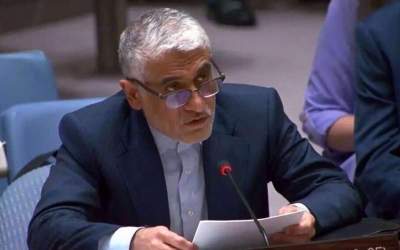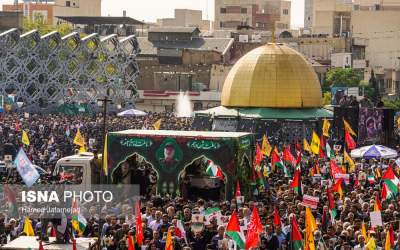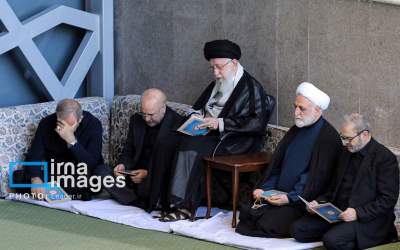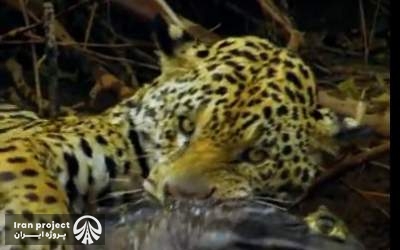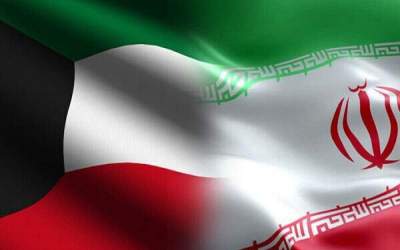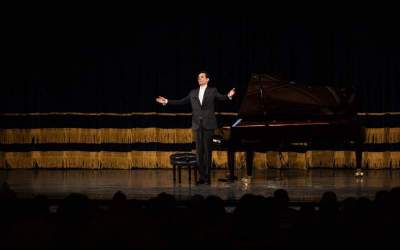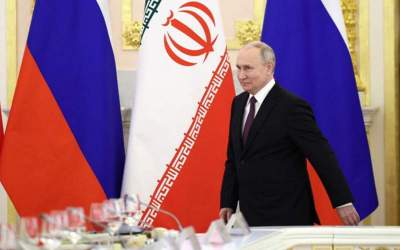A 3,000-year-old Iranian tradition for people of all faiths, Nowruz is celebrated by the world�s Persian-speaking community and other ethno-linguistic groups across Western Asia, Central Asia, the Caucasus, the Black Sea Basin, the Balkans and even parts of Europe.
[caption id="" align="alignnone" width="555"]
 A mother and her child smile as they buy flowers at a market ahead of Nowruz, the Iranian New Year.[/caption]
A mother and her child smile as they buy flowers at a market ahead of Nowruz, the Iranian New Year.[/caption]Kazakhstan, Kyrgyzstan, Turkmenistan, Uzbekistan, Afghanistan, India, Albania, Azerbaijan, Georgia, and Kosovo are some of the countries, where the tradition is observed.
In countries, where Persian is the mother tongue, like in Tajikistan, the occasion is honored as a public holiday.
International recognition
The occasion, marking the vernal equinox, falls in March every year.
In 2010, the United Nations General Assembly recognized the International Day of Nowruz, describing it as a spring festival of Iranian origin, which has been celebrated for more than three millennia.
[caption id="" align="alignnone" width="555"]
 People buy candies and nuts at a market in the final days of the Iranian year.[/caption]
People buy candies and nuts at a market in the final days of the Iranian year.[/caption]Nowruz was officially registered on the UNESCO List of the Intangible Cultural Heritage of Humanity in 2009.
History
It is one of the world�s most long-established celebrations, running back more than 30 centuries. It has its roots in ancient Persia, and is thus still celebrated mostly across the Persian Plateau, especially Iran, which holds the largest concentration of the world�s Persians.
[caption id="" align="alignnone" width="555"]
 Locals in traditional costumes partake in the "Nowruz-Khani" ceremony, singing in anticipation of Nowruz holidays in the northern Iranian Province of Golestan, March 19, 2018.[/caption]
Locals in traditional costumes partake in the "Nowruz-Khani" ceremony, singing in anticipation of Nowruz holidays in the northern Iranian Province of Golestan, March 19, 2018.[/caption]Some credit Babylonians with establishing Nowruz, while others hold that Zarathustra was the one who pioneered the jubilations.
Nowruz is extensively addressed across the Persian literature. For instance, peerless Persian poet and author of Shahnameh (Book of Kings), Ferdowsi, chronicles its creation with an allegorical incident, when mythological King Jamshid sat on his throne and waited until sun rays struck his crown before announcing Nowruz.
Cyrus the Great, who founded the first Persian Empire, called the celebration a national holiday, and ordered that domestic spaces and public places be tidied up as a means of paying tribute to the spring.
[caption id="" align="alignnone" width="555"]
 Hajji Firuz (R), a fictional character in Iranian folklore, sings in the streets ahead of Nowruz.[/caption]
Hajji Firuz (R), a fictional character in Iranian folklore, sings in the streets ahead of Nowruz.[/caption]Darius I, the fourth monarch of the Achaemenid Empire, founded by Cyrus, would celebrate Nowruz in Persepolis.
Once defeating the Roman Empire, Ardeshir I, the founder of Persia�s Sassanid Empire, ordered for Nowruz to be celebrated. Within the Roman Empire, Nowruz became known as Lupercal.
Upon embracing Islam, Persia would still celebrate Nowruz. The religion, especially the Shia faith, regards it as an auspicious occasion.
Modern-day Iranian tradition
In the weeks running up to Nowruz, Most Iranians do spring-cleaning in harmony with the rebirth of the nature.
[caption id="" align="alignnone" width="555"]
 A little girl hangs up her damp dolls during spring-cleaning.[/caption]
A little girl hangs up her damp dolls during spring-cleaning.[/caption]Traveling through the cities at the time, one is more than likely to see people washing the windows of their houses or hanging up their washed-up carpets on rooftops.
[caption id="" align="alignnone" width="555"]
 People are busy shopping at Tehran's Tajrish Bazaar in preparation for Nowruz.[/caption]
People are busy shopping at Tehran's Tajrish Bazaar in preparation for Nowruz.[/caption]Also preceding the holidays is New Year shopping. Families go about buying fruit, pastry, and dried nuts to serve holiday-time guests with, and also purchase new clothing items.
[caption id="" align="alignnone" width="555"]
 Tehran's Grand Bazaar is bustling with people shopping in anticipation of Nowruz holidays, March 16, 2018.[/caption]
Tehran's Grand Bazaar is bustling with people shopping in anticipation of Nowruz holidays, March 16, 2018.[/caption]They spread out the proverbial Haft-Seen table, an arrangement of seven items alliteratively beginning with the letter �Seen� in the Persian Alphabet, which sounds similar to �S.�
These symbolic items represent health, prosperity, longevity, reproduction and happiness for the family members throughout the year.
Iranian Haft Seen also includes Quran, Islam�s holy book.
A fishbowl containing red goldfish is also usually added to the arrangement.
[caption id="" align="alignnone" width="556"]
 In line with an age-old tradition, Iranians celebrating Nowruz set the Haft Seen table, displaying a variety of items which symbolize health, prosperity, wealth, happiness and longevity.[/caption]
In line with an age-old tradition, Iranians celebrating Nowruz set the Haft Seen table, displaying a variety of items which symbolize health, prosperity, wealth, happiness and longevity.[/caption]On the last Thursday of the Iranian year, people also visit the graves of their loved ones. They usually take flowers to the cemetery,�wash the�gravestones and pray for the departed.
[caption id="" align="alignnone" width="555"]
 Iranians fill the cemetery with flowers to pay respect to the dead loved ones in the final days of the year.[/caption]
Iranians fill the cemetery with flowers to pay respect to the dead loved ones in the final days of the year.[/caption]In Iran, the arrival of the New Year is announced by the firing of cannonballs.
A fortnight-long holiday span follows the inauguration of the New Year, when all schools and universities are closed for its entire length and public servants usually take a week off.
[caption id="" align="alignnone" width="555"]
 A vendor shows his Nowruz sprouts.[/caption]
A vendor shows his Nowruz sprouts.[/caption]On the first day, family members typically gather around the Haft Seen table, awaiting the exact moment of the spring�s arrival based on the solar calendar.
After the turn of the year, they begin exchanging gifts and money to congratulate each other.
Iranians dedicate the first few days of the year to visiting parents and elders. They also pay short house visits to other family members, friends and neighbors.
The holidays culminate in Sizdah Bedar, the 13th day of the New Year, a day of family outings.
People take to parks and other green spaces countrywide, usually eat al fresco, and dispose of the Haft Seen�s Sabzeh, a patch of grown sprouts kept as an item on the Haft-Seen.


